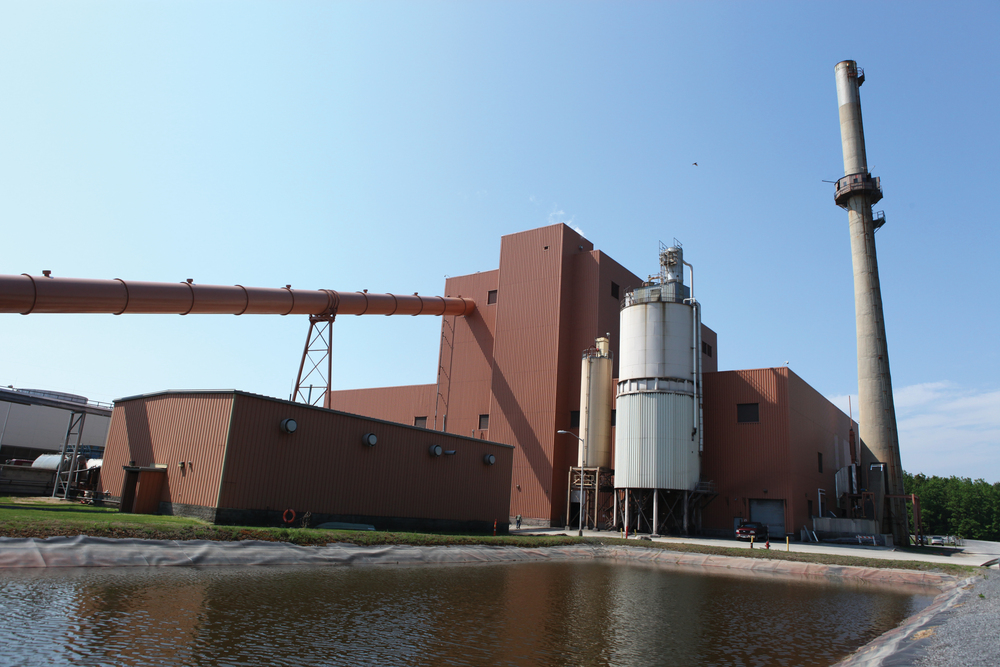Mission Alignment










PHOTO: ReEnergy
October 25, 2013
BY Tim Portz
Ft. Drum is a U.S. Army post in upstate New York, positioned south of the Canadian border just beyond the eastern reaches of Lake Ontario. The 107,000-acre facility is home to the Army’s 10th Mountain Division and has been utilized as a training facility since its first acres were purchased over 100 years ago. Situated inside of the fort’s perimeter is a power plant that its new owner and operator, ReEnergy Holdings LLC, is hopeful will soon be among the Department of the Army’s growing list of renewable energy success stories.
The facility, which ReEnergy has dubbed ReEnergy Black River, was designed and configured to burn coal but was idled by its former owners Energy Investors Funds Group in 2010. While the facility no longer delivered the returns EIF wanted, it fit perfectly with ReEnergy’s business model. In December 2011, the company purchased the plant from EIF and began an extensive retrofit project.
Larry Richardson, CEO of ReEnergy, notes that EIF did well to preserve the value of the idled facility. “The prior owner had really done a good job of laying up the facility,” he says. “Certainly the key elements of the facility, the three boilers and the one turbine generator, had been laid up in a manner where the quality of those items was largely preserved.”
Advertisement
Despite the facility’s preserved condition, ReEnergy’s additional investments into the Black River station topped $30 million with significant investments made to the facility’s fuel receiving and distribution infrastructure. “Where coal had previously been delivered by rail, we had to build the infrastructure to accept the biomass by truck, installing truck tippers as well as a new fuel conveying and storage and processing system,” says Richardson.
The plant’s initial design to deliver not only power to the grid but also hot water to an on-base district heating system was scuttled early in the life of the project. Apart from where it sat, the facility had no relationship with the base, with all of its produced energy being sold over the fence and onto the waiting power market.
Richardson and his team at ReEnergy hope to change all that. At press time, ReEnergy is waiting to hear from the Department of the Army and the Defense Logistics Agency on their response to the Army’s request for proposal for enough renewably produced power to support the base, about 28 MW. “Without question, the location of the power plant inside the fence at Ft. Drum presented a great opportunity to provide secure, renewable energy to Ft. Drum on an ongoing basis, particularlysince the plant had never delivered electricity to Drum in the past. It was a significant consideration in our investment decision and the alignment with the Department of Defense and the Department of the Army’s initiatives related to secure energy and renewable energy. We felt the alignment was great and timing was right to make this happen,” says Richardson.
Regardless of the Department of the Army’s final decision, the Black River project fits well into the growing power and fuel processing portfolio amassed and operated by ReEnergy. Operating predominantly in the Northeast, ReEnergy owns or operates 13 different facilities in six states with a total output of 325 MW, directly employing over 300 people.
Advertisement
Making environmental performance a core element of its operating philosophy, ReEnergy recently achieved certification from the Sustainable Forest Initiative, which verifies that its biomass procurement practices adheres to stringent, responsible forestry practices.
Additionally, among the investments that ReEnergy made at the Black River Project was a new cooling tower. Before ReEnergy’s retrofit, water was simply taken from the Black River, a mile south of the facility, and process water was discharged back into the same river, resulting in a significant thermal plume. Richardson points out the significant advantage the cooling towers bring to the facility noting that it “allowed [ReEnergy] to reduce both the withdrawal of water from the Black River and the thermal discharge back into the Black River by about 90 percent.”
Rounding out the facility’s forward-thinking operating strategies is a unique feedstock program being developed with assistance from the Biomass Crop Assistance Program. Hoping to leverage the marginal land in the vicinity of the Black River station, farmers are being recruited to establish shrub willow. Nearly 1,100 acres of marginal land in a three-county area will be planted with shrub willow and will eventually contribute to the facility’s fuel needs.
The Black River project in many ways represents a series of firsts for ReEnergy. The facility is ReEnergy’s largest asset when measured by output, its first coal-to-biomass conversion, and the first company-owned asset that sits on a military base. Richardson is hopeful it won’t be ReEnergy’s last. “We definitely see an opportunity to replicate this business model at other military bases around the country,” he adds. “There is no question that the success here should be a differentiator for us as we pursue other opportunities around the country. That is why we are hopeful we will be awarded a contract here and really be a part of one the early success stories in the Army’s renewable initiatives.”
Author: Tim Portz
Executive Editor, Biomass Magazine
tportz@bbiinternational.com
701-738-4969
Upcoming Events





